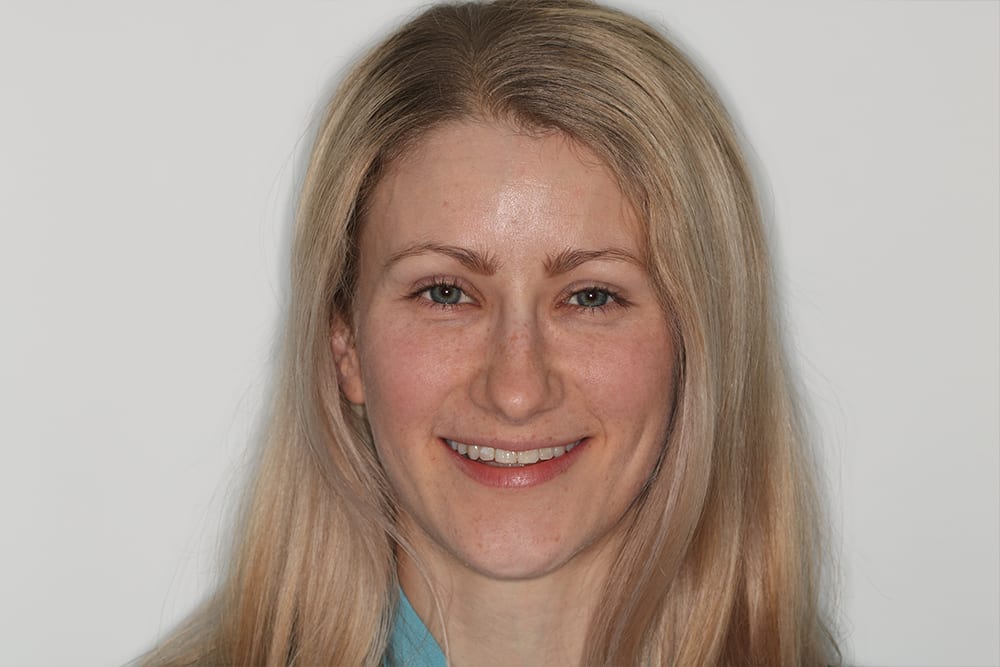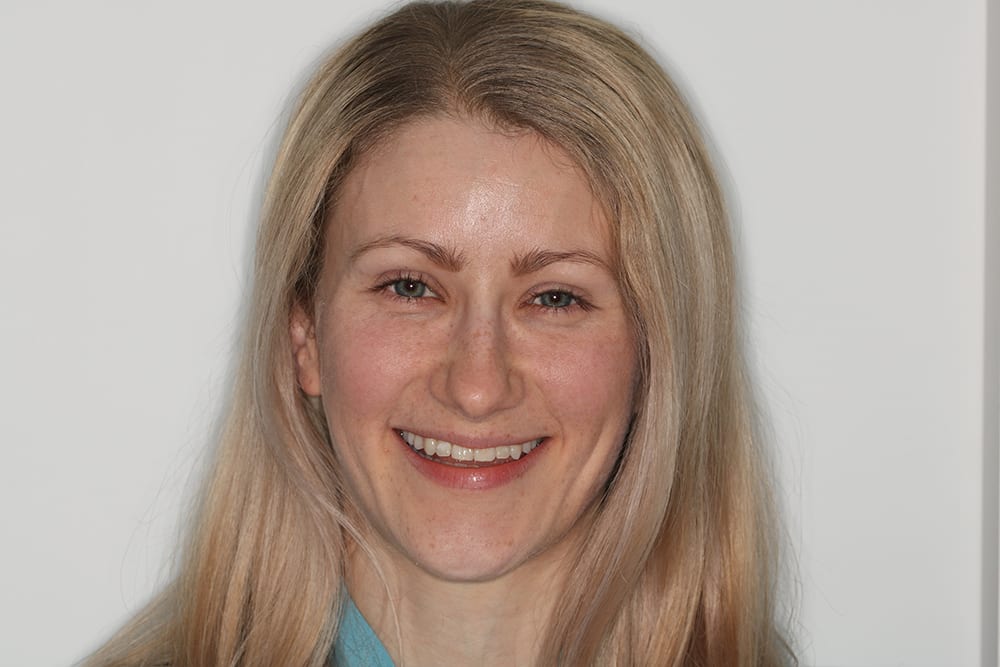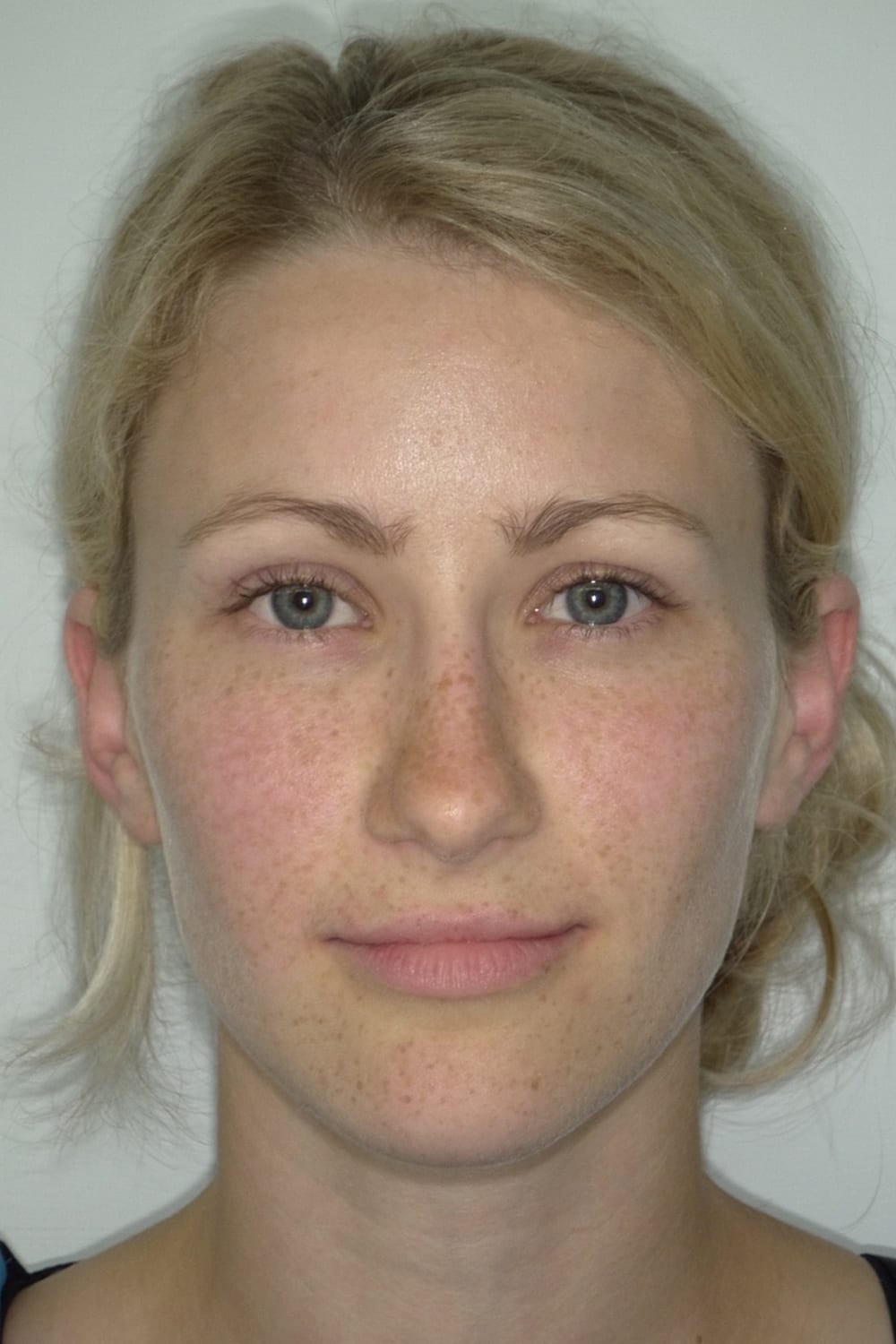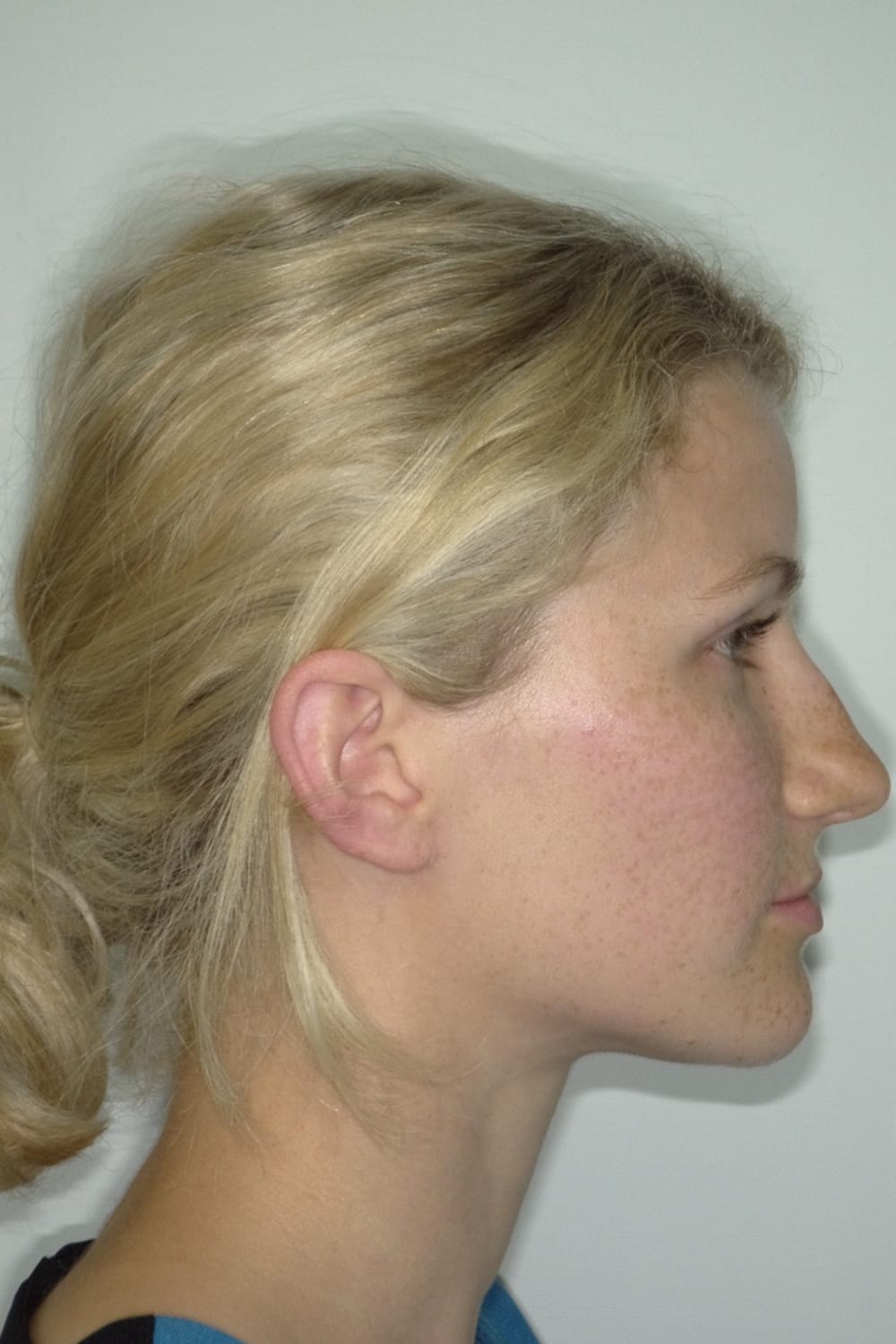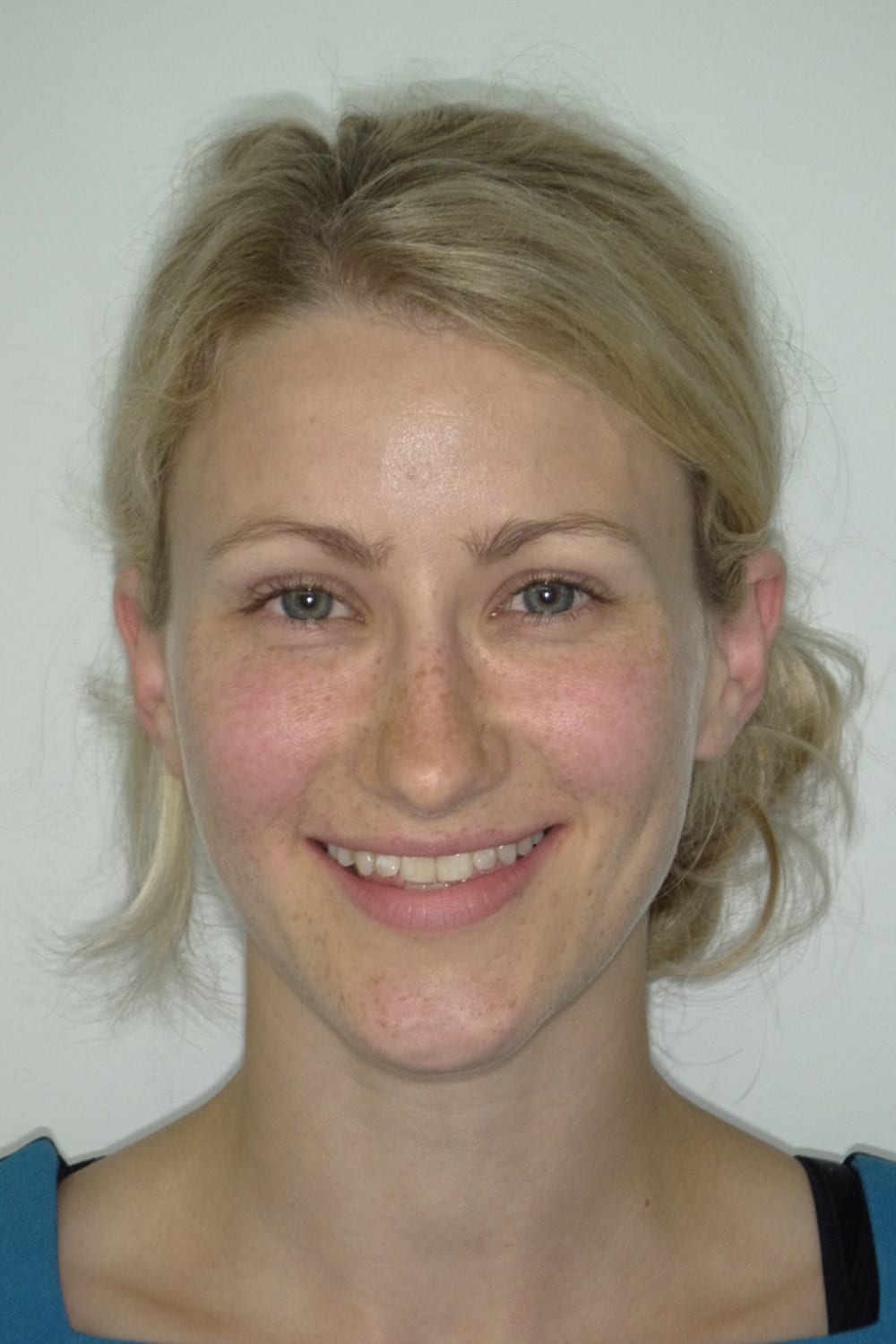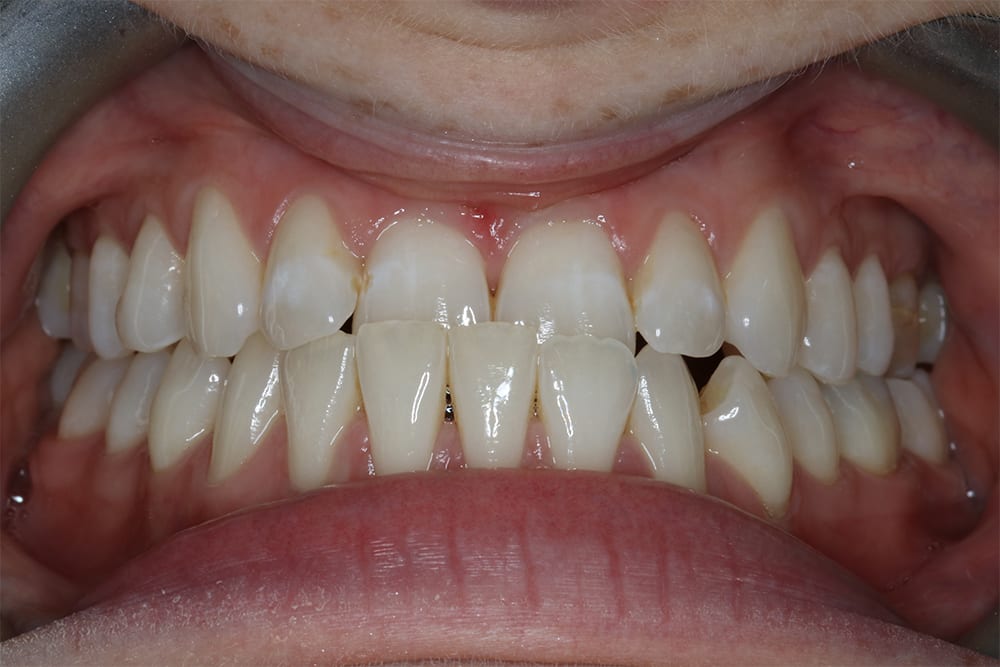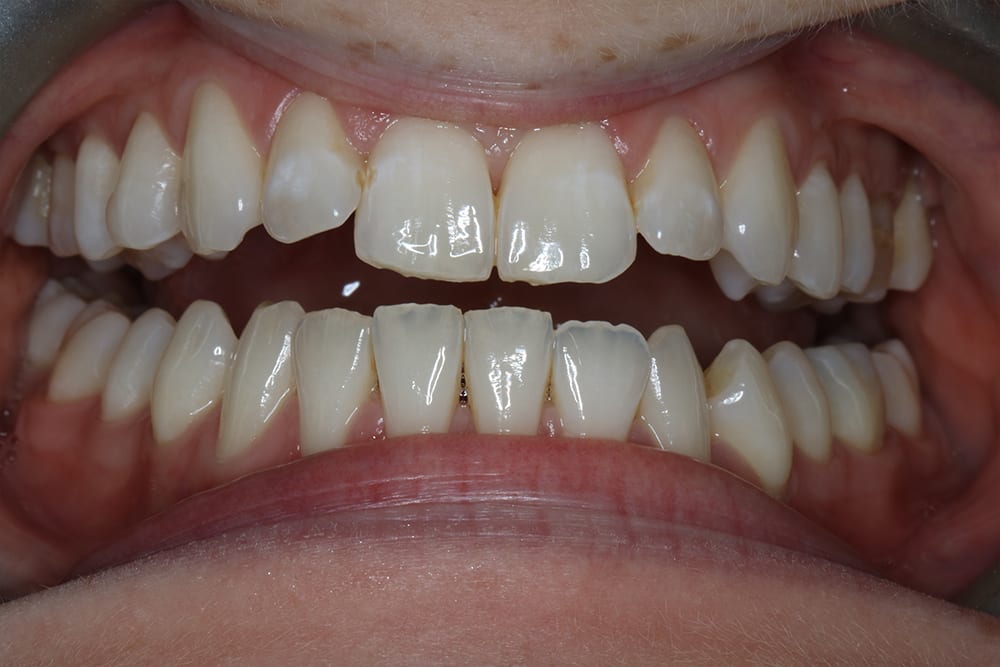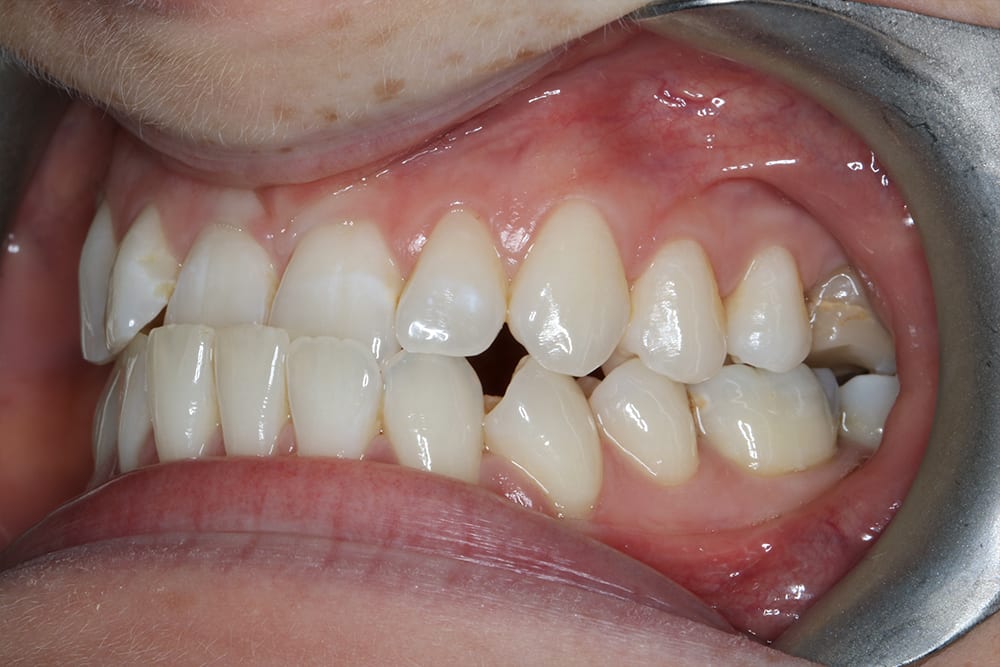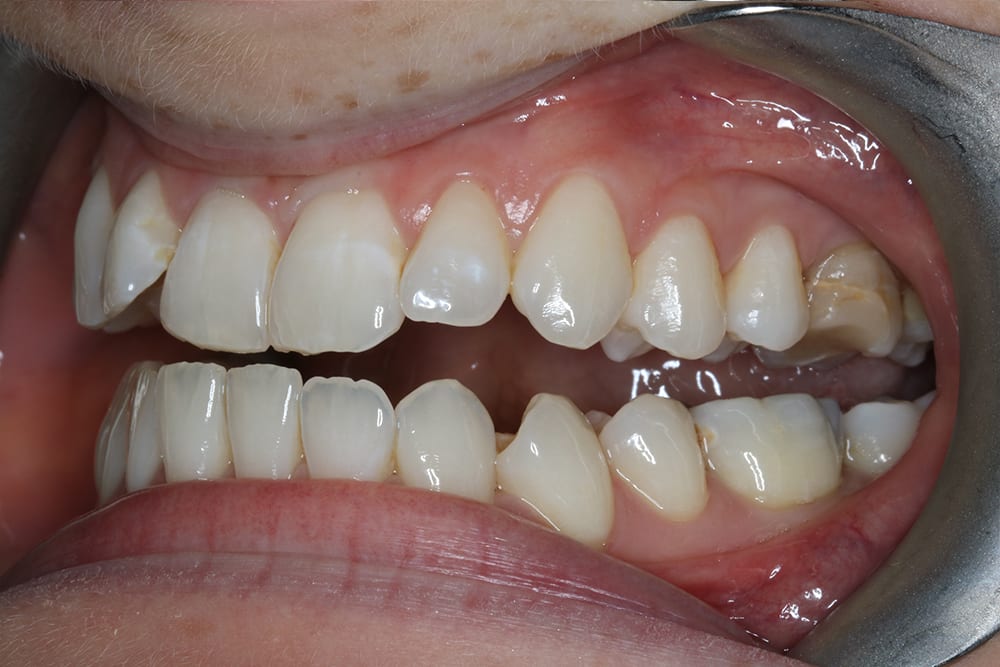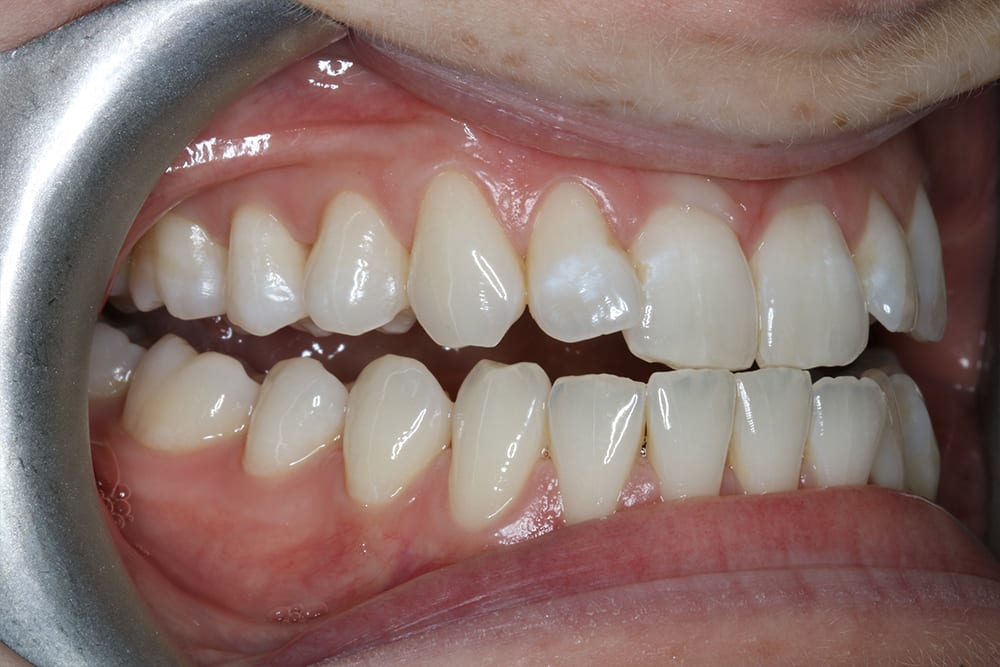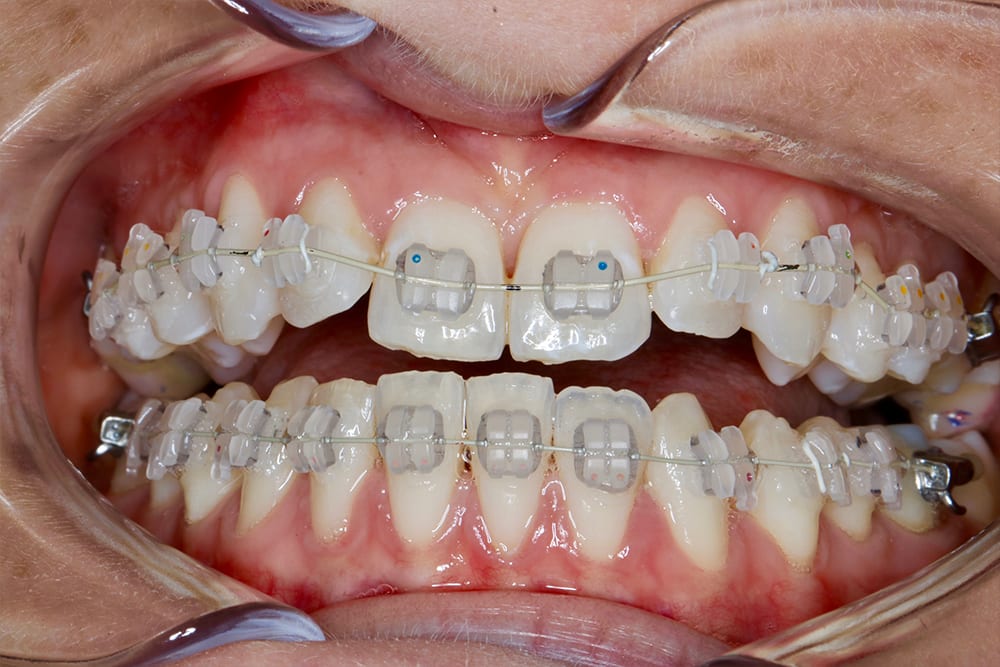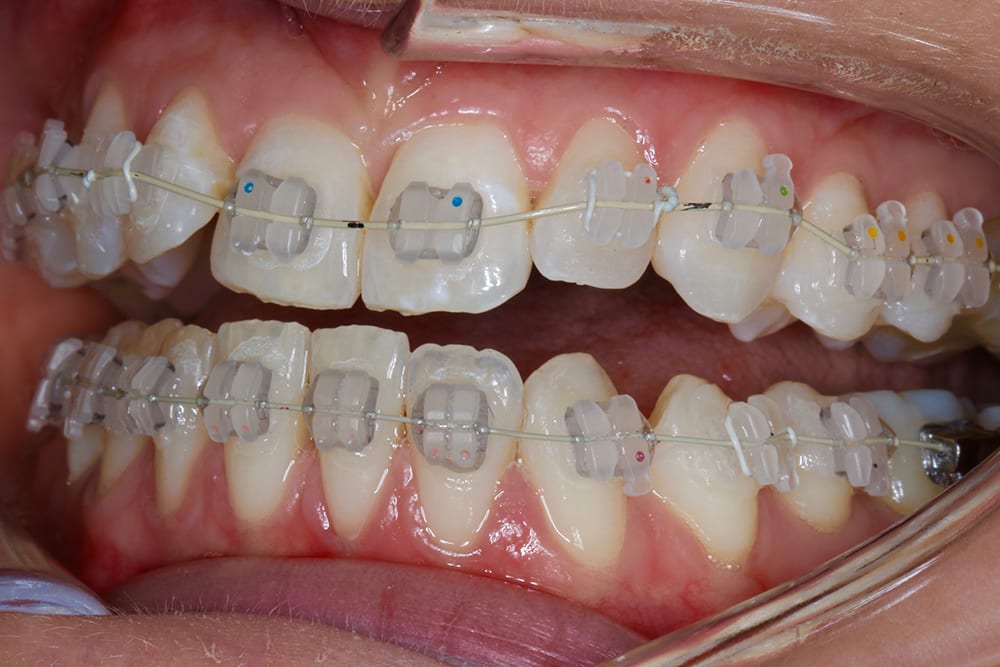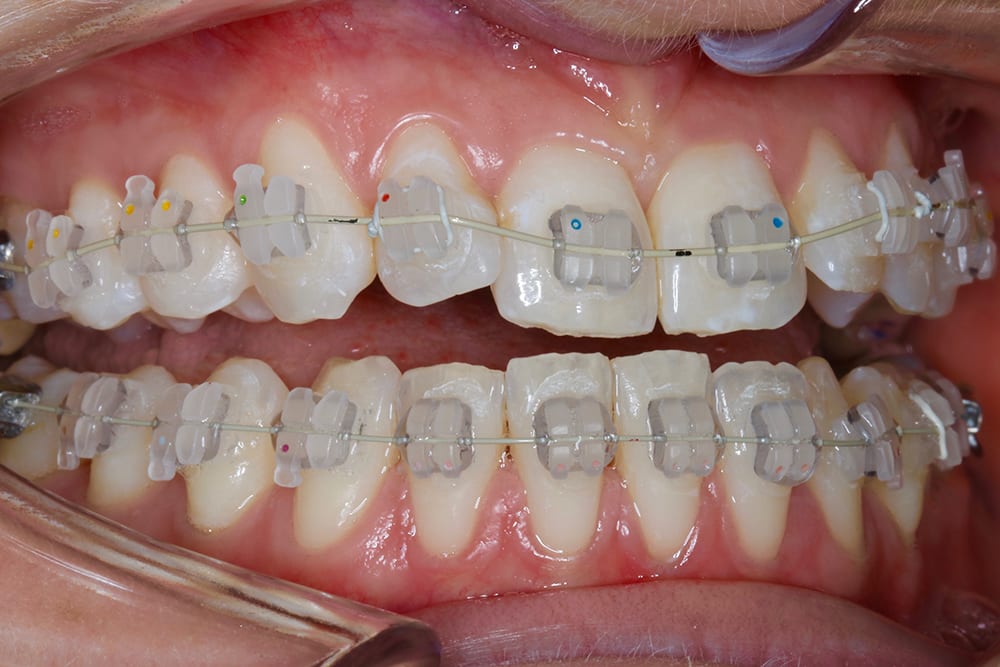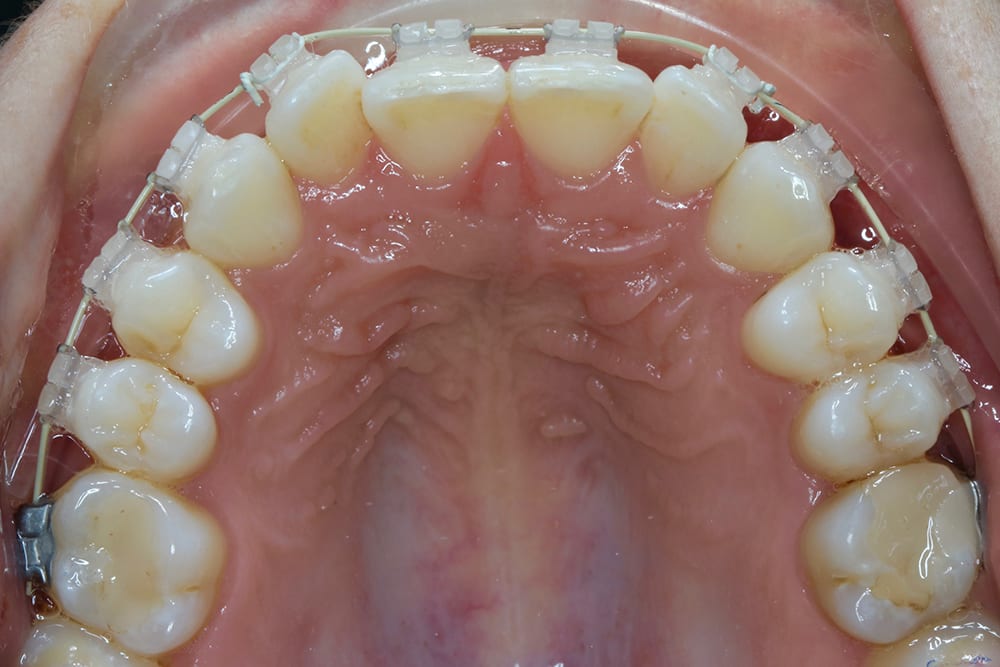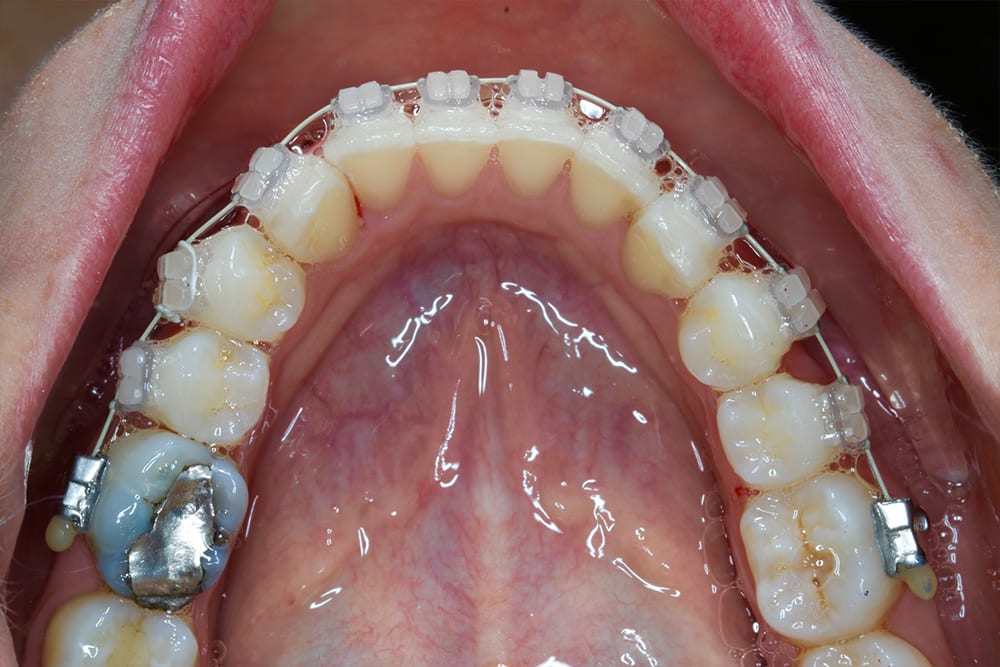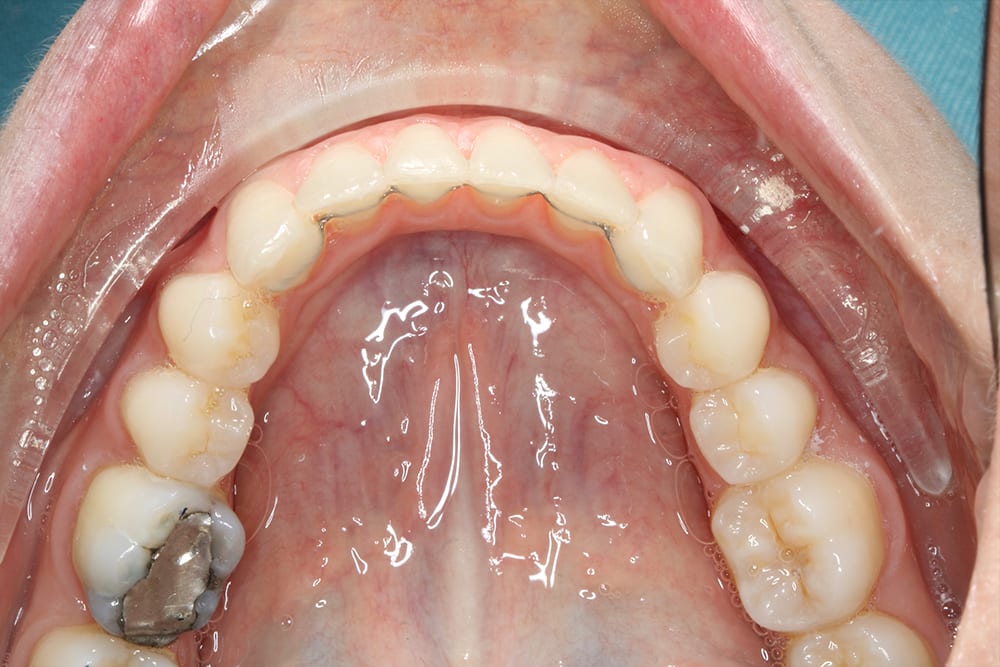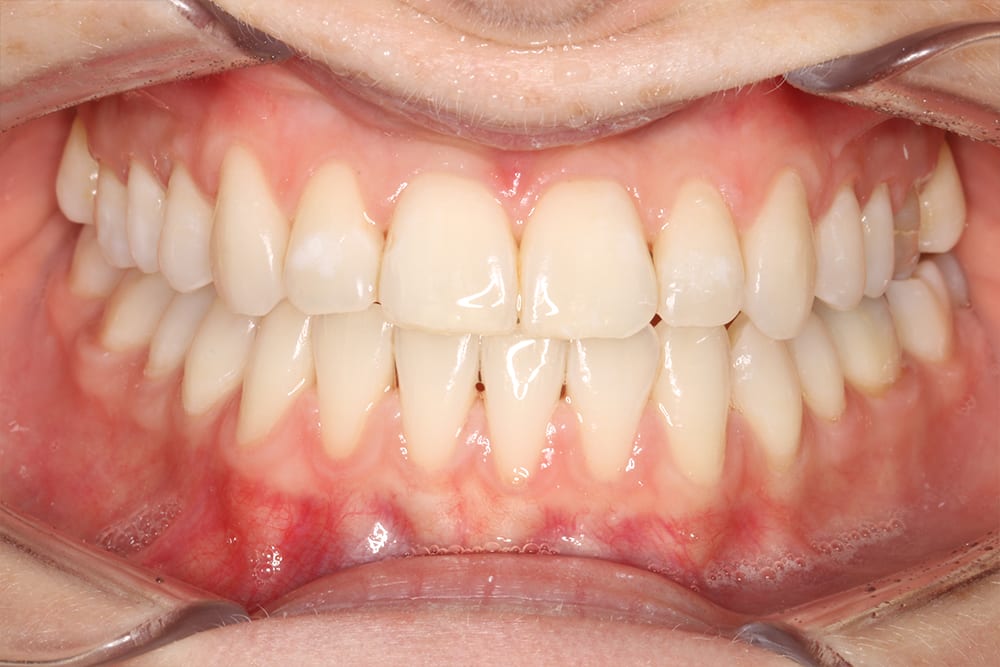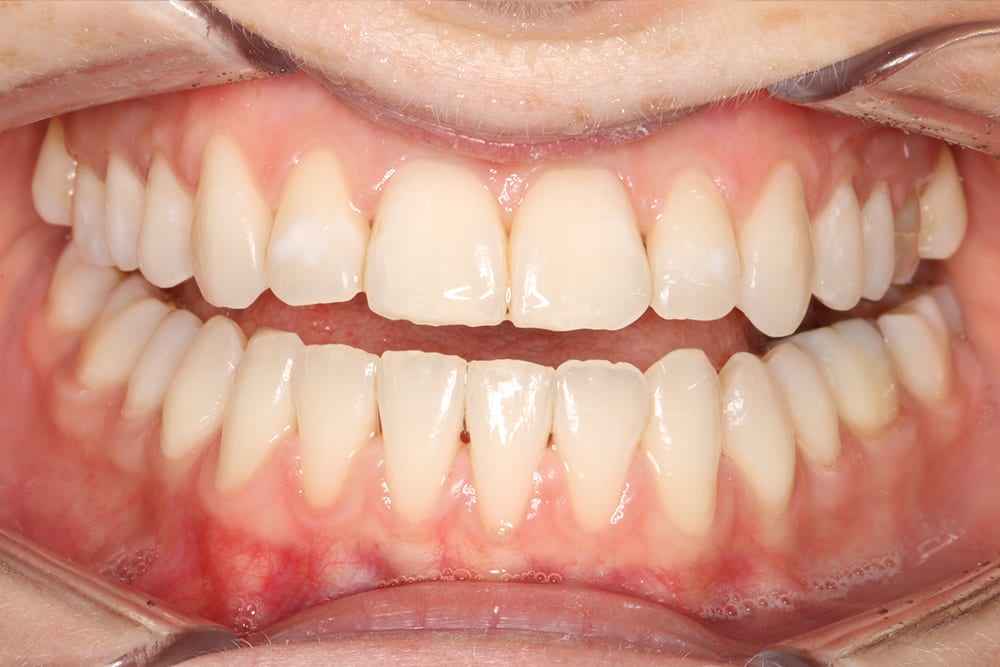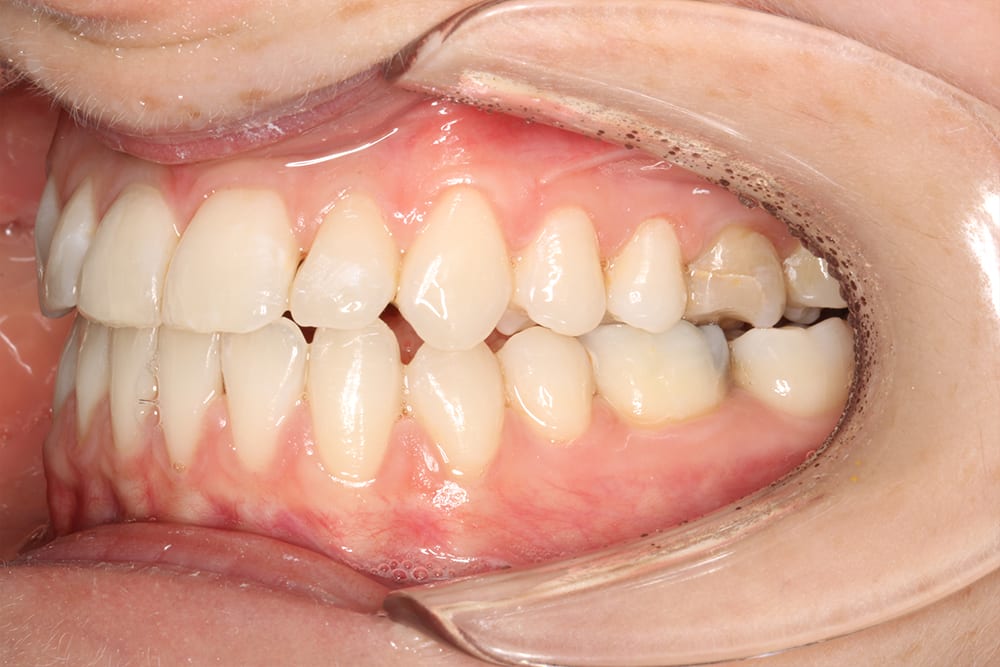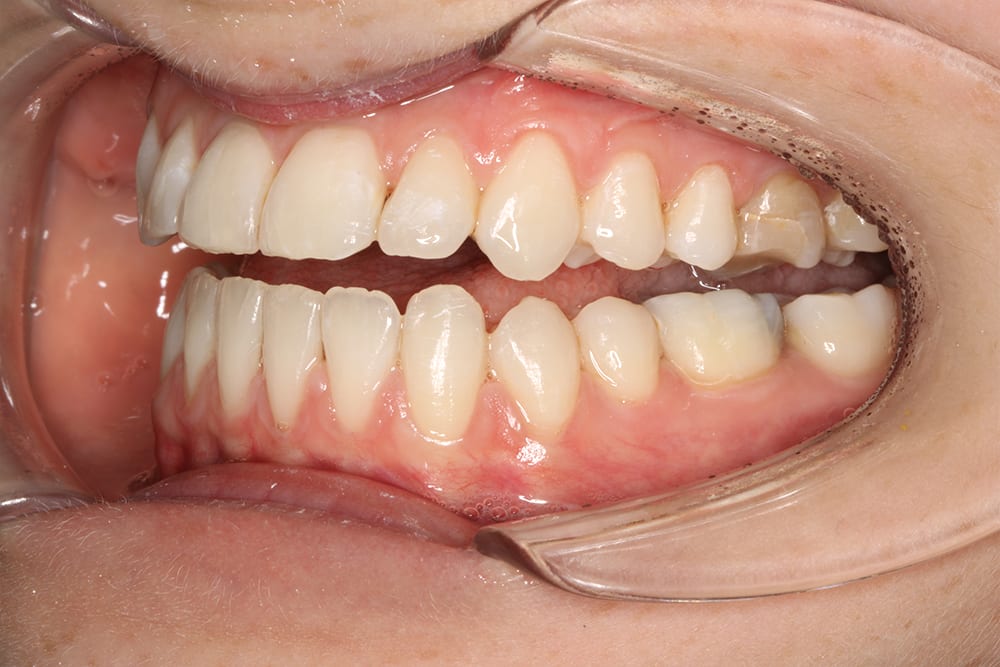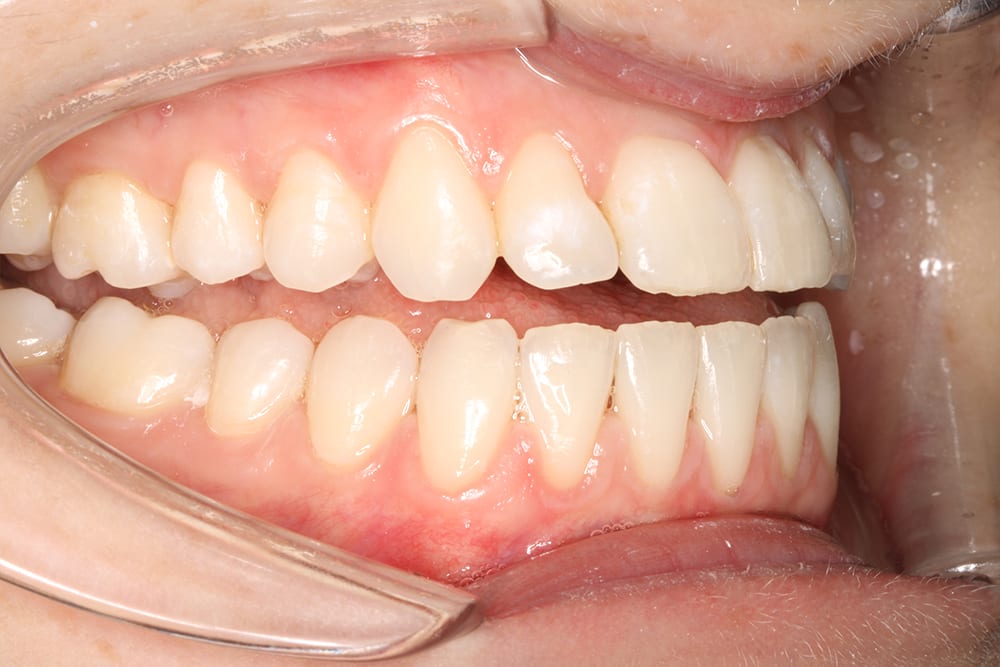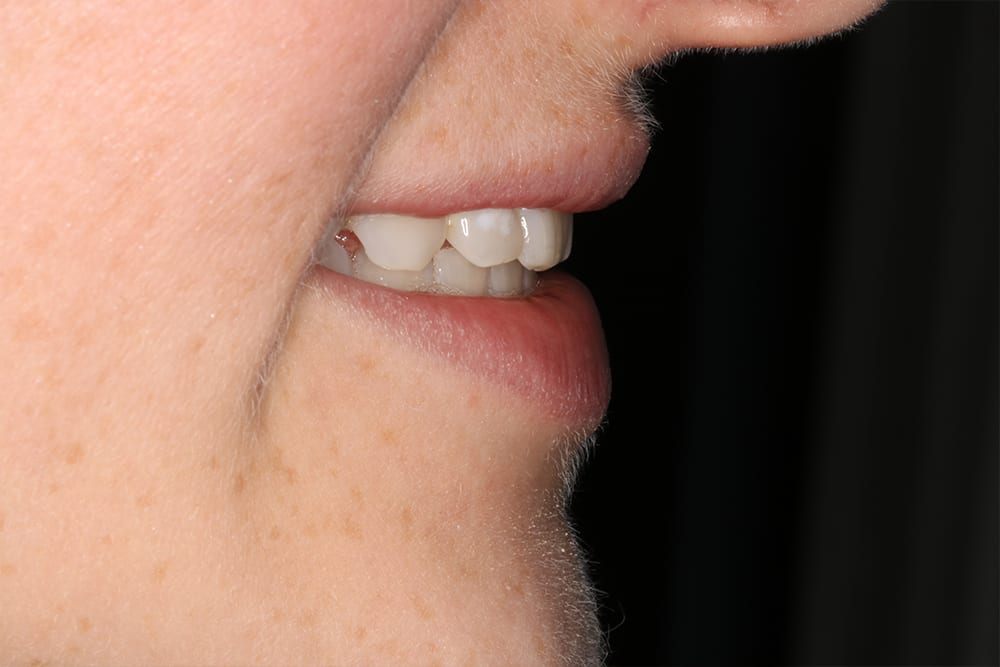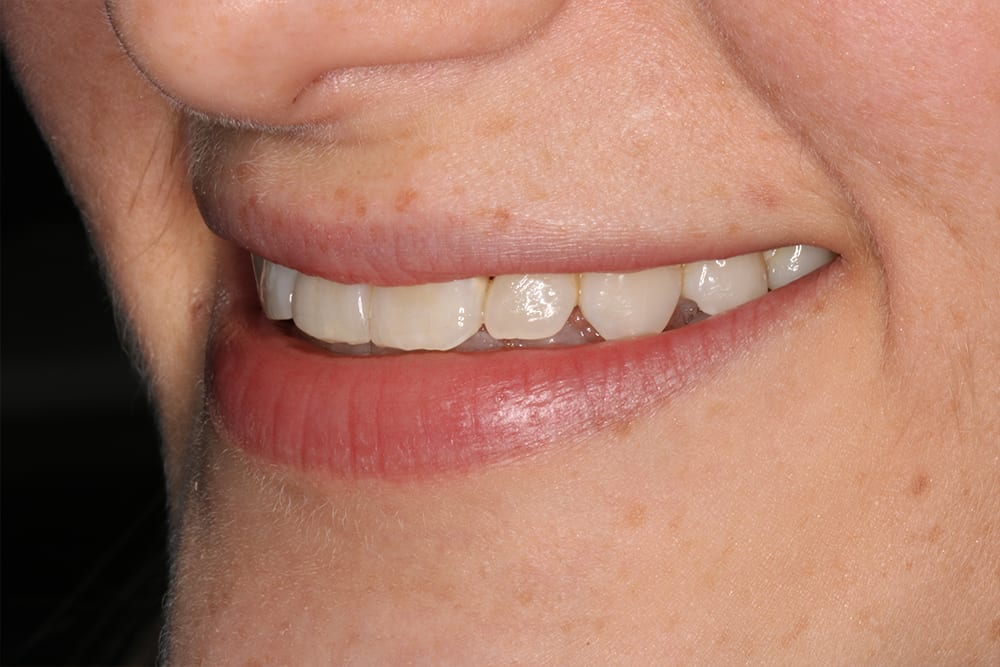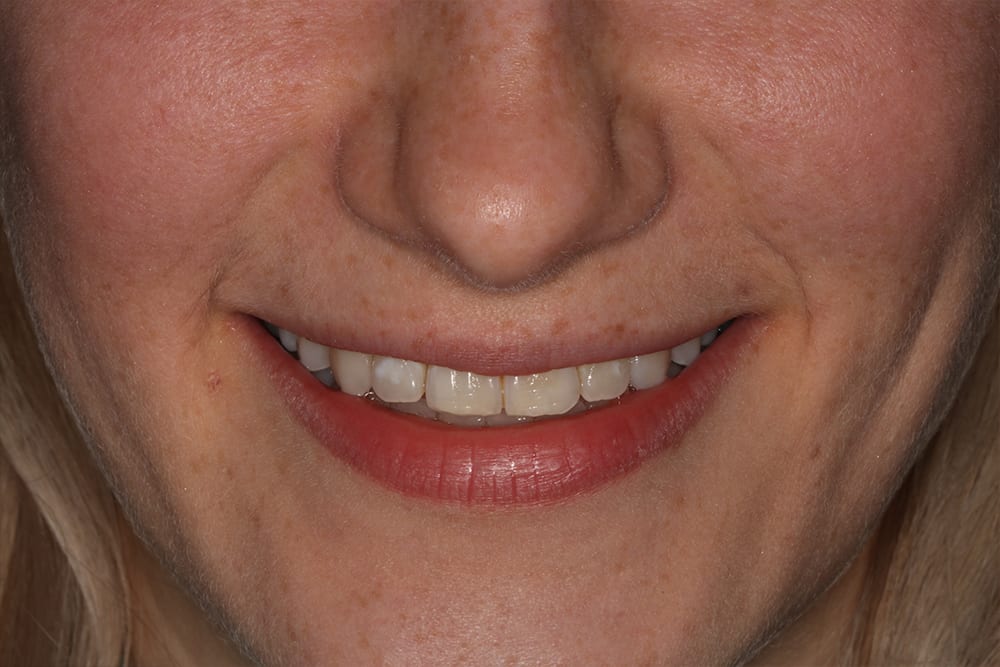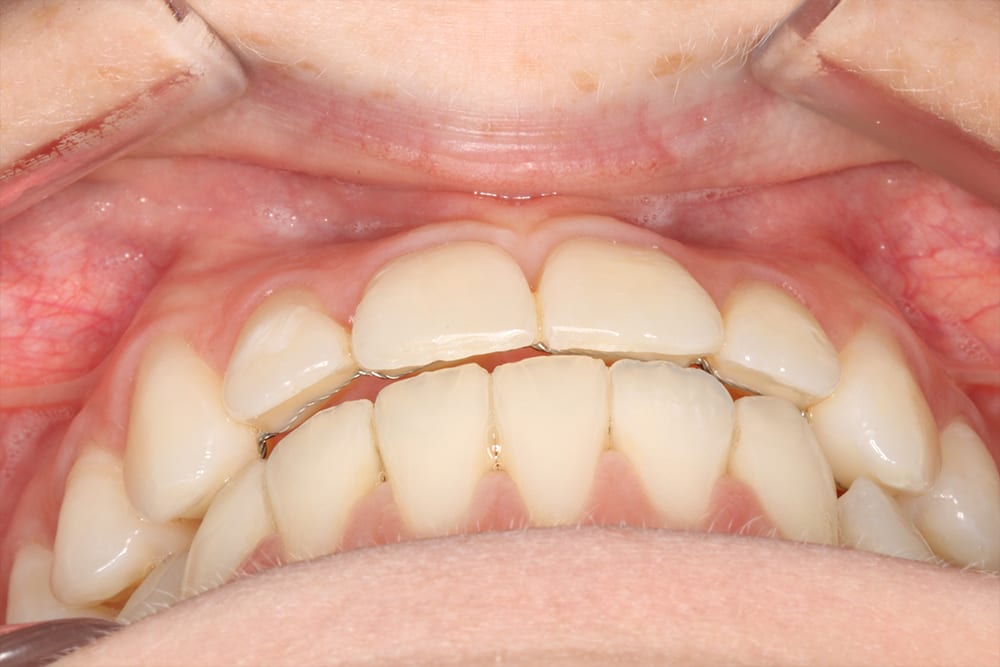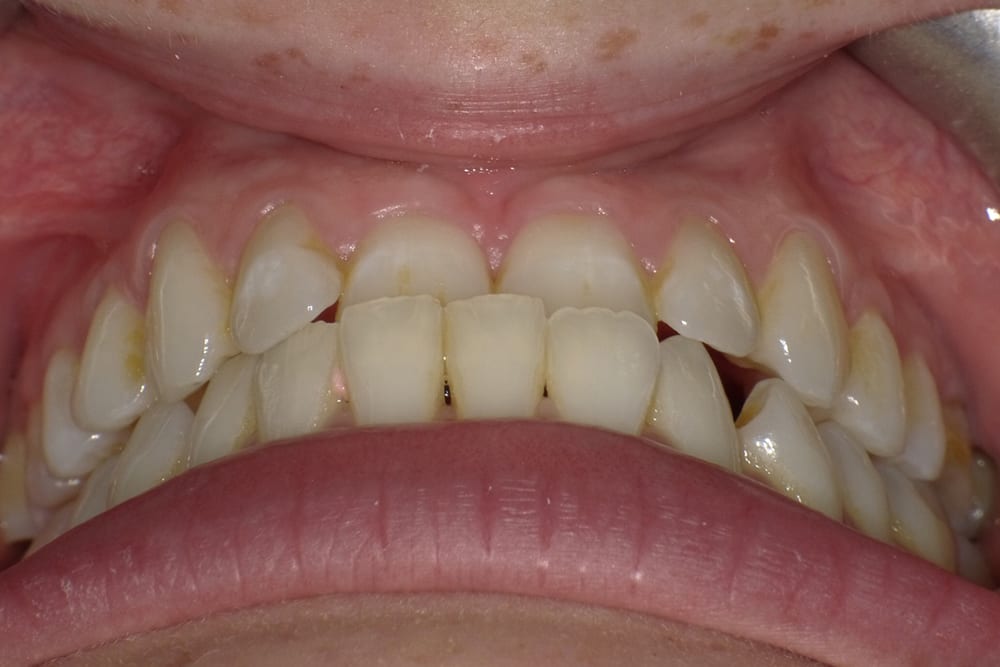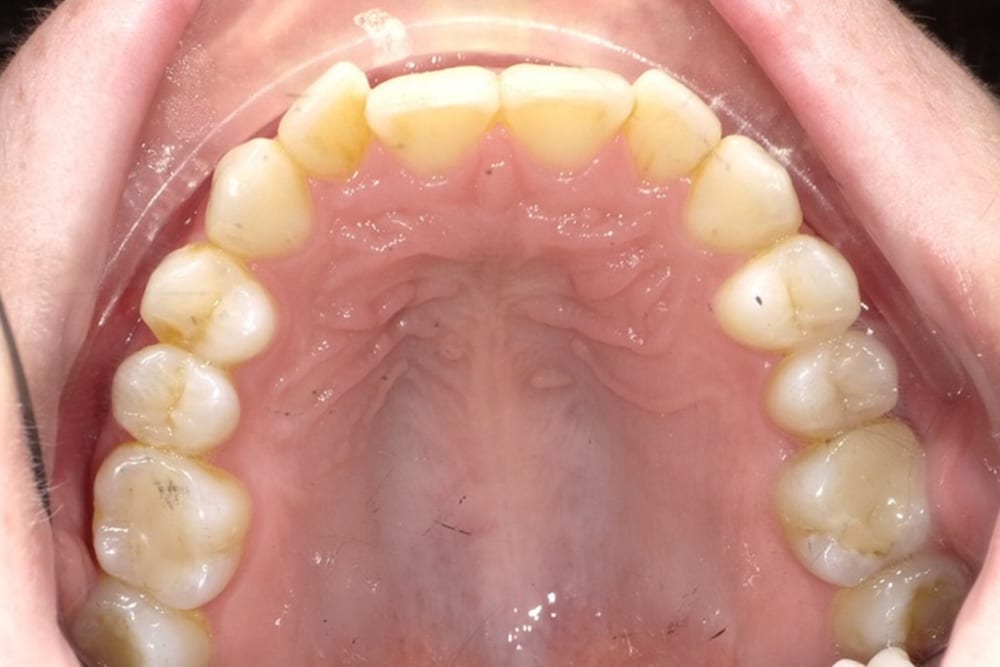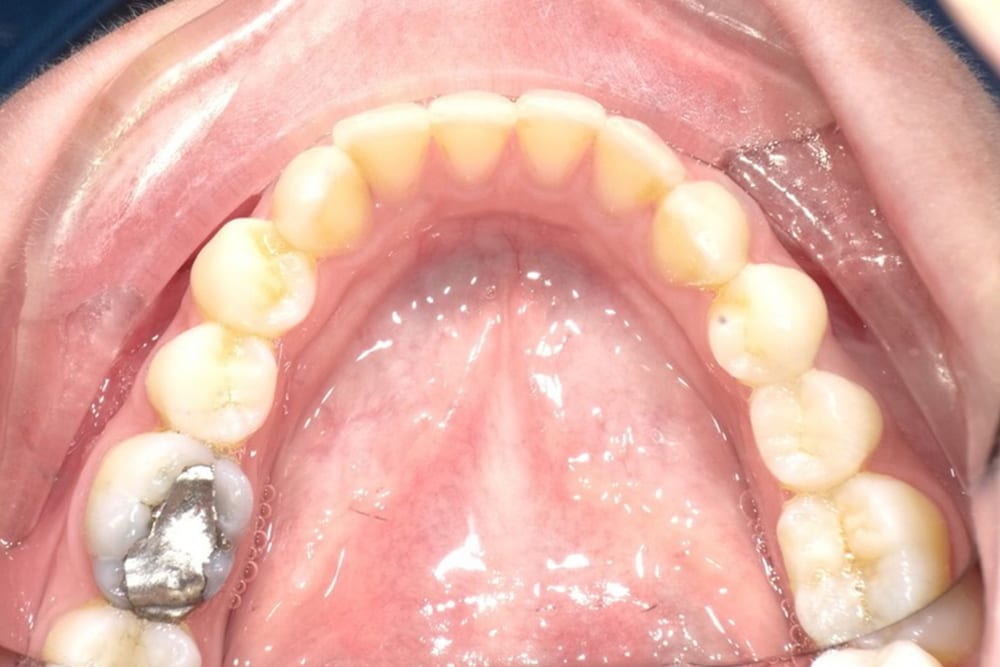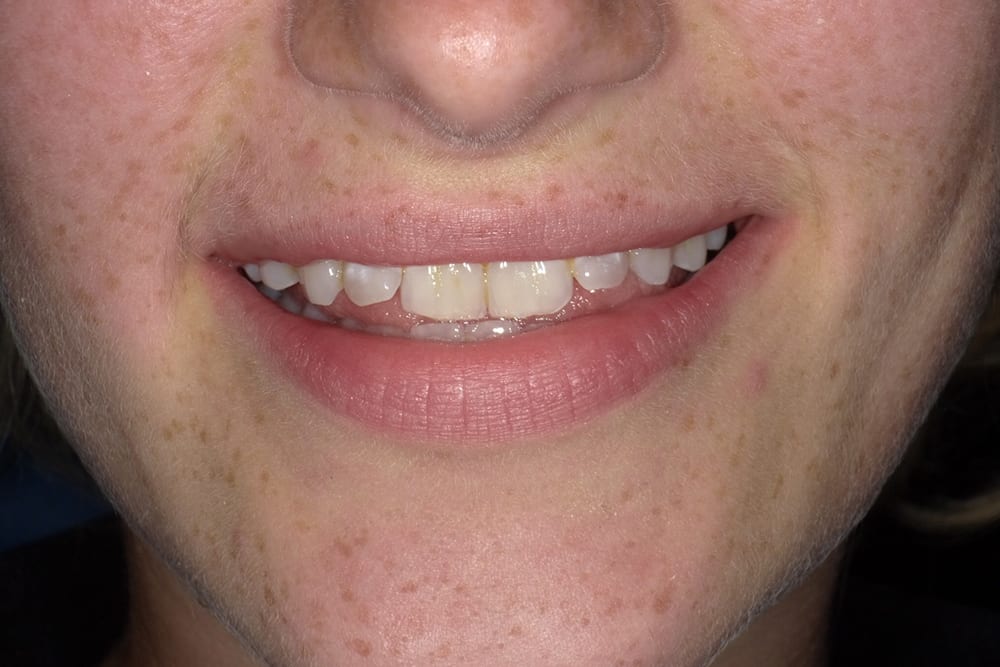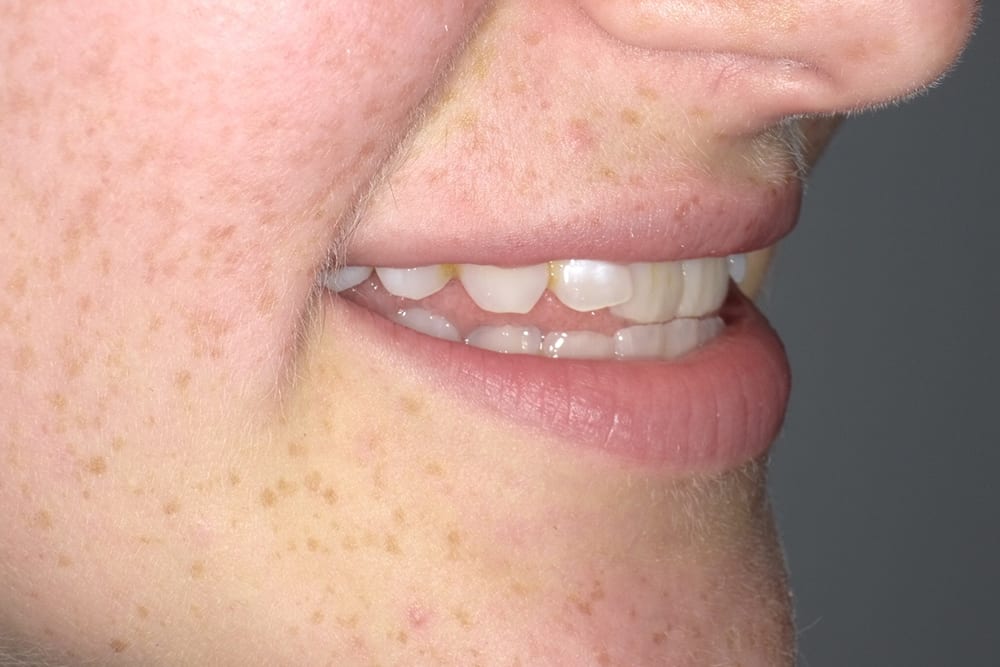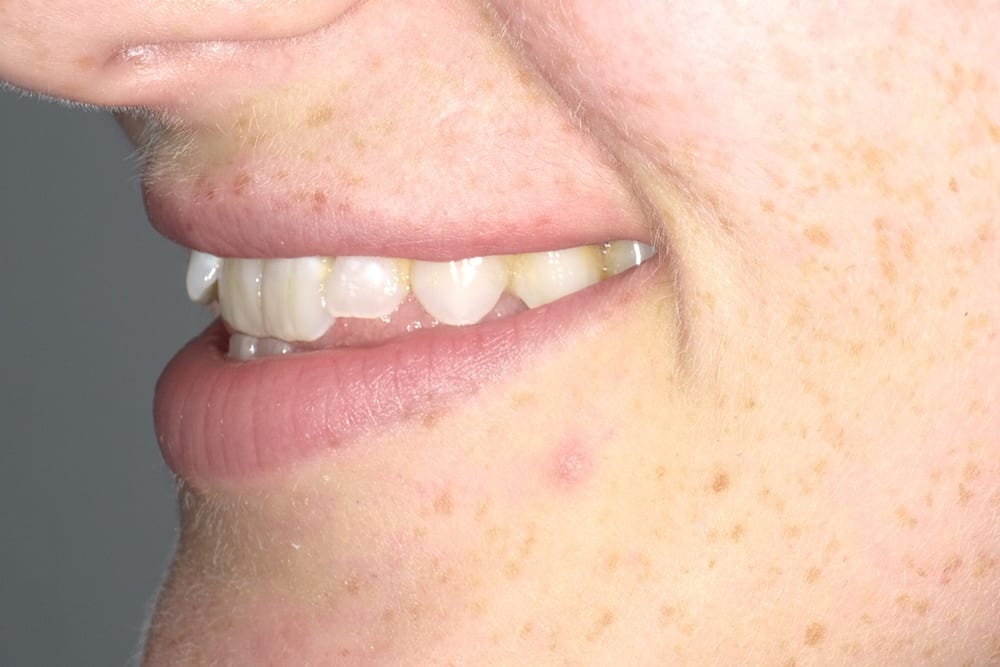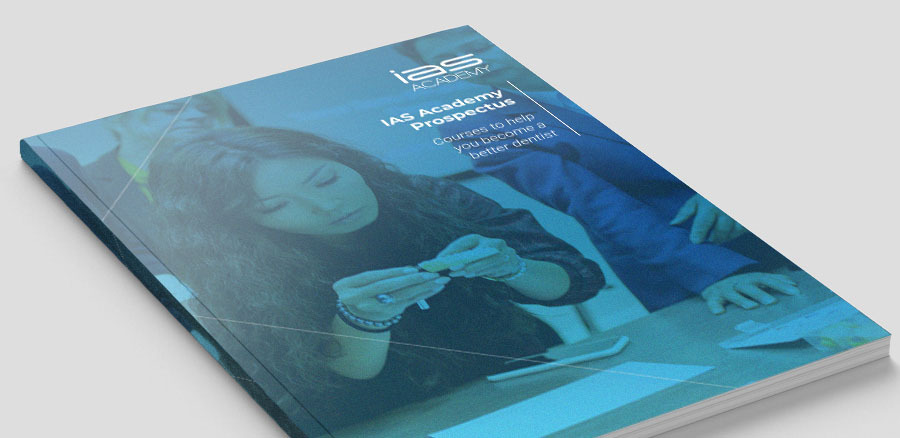Class III Clear Smile Brace Case
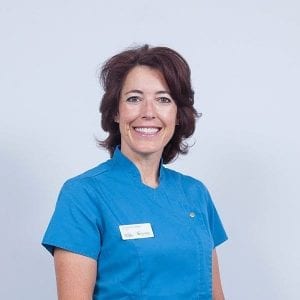
Treatment carried out by Jessica Wake BDS

Jessica Wake graduated from The University of Birmingham in 1989 with a degree in Dentistry. She is an Associate at St John’s Hill Dental Practice in Shrewsbury which is a mixed Denplan, Private and NHS practice and Jessica offers all aspects of general dentistry but has a special interest in cosmetic dentistry using minimally invasive techniques to Align, Bleach and Edge bond the teeth.
Jessica has worked with the IAS Academy for over three years now and has progressed through the full training pathway and as a result is able to offer anterior alignment orthodontics using a range of treatment options including the ClearSmile Brace system, ClearSmile Aligners, the Inman Aligner and the Discreet lingual orthodontic system. She has recently achieved her Accreditation in the ClearSmile Brace system and is looking forward to starting the IAS Academy’s Advanced Course in November run by Prof. Ross Hobson. This will enable her to treat more complex Orthodontic cases to the usual Gold Standard of the IAS Academy.
Case Report
This is a case which shows what can be achieved using the Clear Smile Brace system.
One of the dental nurses at our practice had not liked the appearance of her teeth for some time. She felt the upper right lateral was ‘sticking out’ and getting worse and she didn’t like the way she closed her teeth together and was very self-conscious whenever she was eating.
She presented with a Class I skeletal relationship but Class III incisors with an edge to edge incisal relationship in retruded contact position but she postured forward on closure to ICP to produce a reversed overjet on the upper central incisor teeth. The aim of treatment was to correct the overjet to a Class I relationship by proclining and aligning the upper incisors and retraction of the lower teeth combined with interproximal reduction. I did not intend to correct the lower centre line deviation or the Class III molar and canine relationship on the left but we planned to remove the displacement on closure.
A full orthodontic Assessment was carried out to include extra and intra oral photographs, periapical radiographs, wax bite and upper and lower silicone impressions.
Orthodontic Assessment
We were able to digitally plan this case using the IAS academy ‘Spacewize’ tool to assess the degree of space available. The Digital ‘Archwize’ results showed us what could be achieved and what compromises we were going to accept. It also gave us an accurate guide as to the amount of interproximal reduction necessary and where this was to be carried out. The Digital results allowed us to see the occlusal views, arch form and shape and the teeth in occlusion in a ‘before’ and ‘after’ scenario.
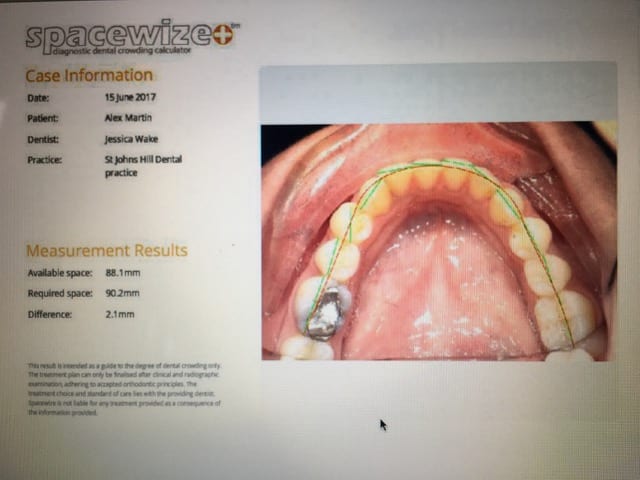
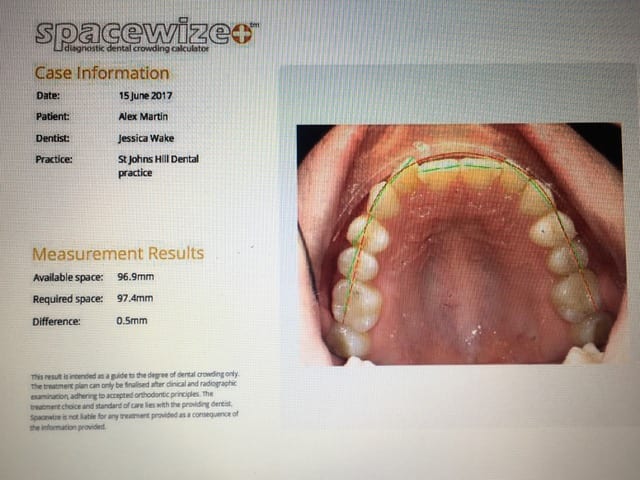
Archwize Results
The Archwize results showed that my Spacewize on the lower arch had not included enough retraction to create the positive overjet required.
A high level of IPR at 4.6mm on the lowers was required. This is higher than the recommended CSB limit of 3mm but was allowed in this case due to the degree of retraction.
Treatment
The 3M Gemini brackets were indirectly bonded on to the teeth using the specially made templates from the IAS laboratory. This allows for ease of placement and accurate positioning of the brackets.
We started the uppers with a 0.016 coated Niti wire which is a larger wire than is normally used on the first visit (normally 0.012). This was because we needed to start getting the central incisors to move forwards. We also opened up the bite using the Occlusal Bumpers on the upper 7’s so this made eating quite difficult for the patient initially.
The IPR was carried out progressively on the lowers using IPR strips, discs and then using a mosquito bur between the lower canines and premolars.
At the end of treatment we bonded upper and lower retainers on the teeth 3-3, again fabricated in the IAS laboratory. We allowed 3 months for the back teeth to settle before providing her with upper and lower Vacuum formed retainers to hold the position of these teeth and to prevent any relapse.
| Appointment | Progress |
|---|---|
| 06/09/17 | Indirect bond up of upper and lower 3M Gemini brackets, IPR lowers started, 0.016 wire upper and 0.012 wire lowers. Occlusal bumpers placed UL7, UR7 to open up the bite. Quick ligs LL4, UR2, UL2. Distal stops on lower molar tubes. |
| 03/10/17 | Placed upper 0.020 x 0.020 wire. Further IPR lowers following archwize guide, 0.012 wire replaced lowers, distal composite stops on lowers to prevent any proclination. |
| 10/10/17 | LL1, LR1 brackets replaced in a new position to intrude slightly to level central incisors. 0.016 wire lowers, LL4 quick tie to engage wire. Distal composite stops on lowers. Occlusal bumpers on 7’s reduced further. 0.020 wire uppers. |
| 31/10/17 | Upper wire 0.019x 0.025 and lower progressed to 0.020 x 0.020, power chain under wire to retract. No distal composite stops to allow retraction to occur. Occusal Bumpers reduced now that upper incisors have jumped the bite. |
| 05/12/17 | Replaced upper 0.019x0.025 and lower progressed to 0.019x 0.025, with lower power chain 6-6 under wire, modules over. |
| 08/12/17 | Moved back to 0.020x 0.020 as very small rotation on LL2. Long tied LL6543 and then PC LL32 to derotate LL2 into line. |
| 02/01/18 | Upper wire kept at 0.019x 0.025 with figure of 8 modules. Lower wire 0.019x 0.025 as rotations all out. Lower power chain 6-6 to close gaps and retract. |
| 02/02/18 | Impressions taken for upper and lower bonded retainers. Long ties upper and lower to maintain position, kept in 0.019x 0.025. |
| 16/02/18 | Fit upper and lower bonded retainers 3-3 and debonded brackets. Polished teeth. 3 months to allow teeth to settle before making VFRs in May 2018. |
Results and Summary
I was unsure at the start as to whether this case was suitable using the Clear Smile Brace system as I felt it was a more difficult case to undertake. It has challenged my skills and I have learnt a lot from this case and would feel more confident with a similar case moving teeth across the bite. My understanding and technical skills have improved considerably.
The post ortho photographs show that we have aligned the teeth and created a positive overjet. I was pleased to see that we had managed to upright the lower first premolar aswell. As per the archwize results we are accepting the deviation in centerlines and the Class III canine and molar relationship on the left.
The IAS Academy’s ‘Spacewize’ and ‘Archwize’ tools are an excellent aid to treatment planning and allow you to measure reasonably accurately the widths of the teeth and whether they will fit into the archform you create.
The Archwize gives a recommended IPR figure to help with space creation. The guidance from the Archwize was very useful indeed and I am pleased to say the outcome very closely matched the proposed digital results. The Archwize digital analysis is a great guide to show what can be achieved and helps with the planning of the case. You can see what compromises you will accept and it gives a valuable aid to show the patient the proposed results.
Mechanics and techniques used in this case included Interproximal reduction, quick ligatures, occlusal bumpers, power chain and distal stops on the lower molar tubes whilst aligning the teeth but which were removed once I wanted retraction to take place. Lingual and palatal bonded retainers. I also learnt how to reposition the lower incisor brackets to level these teeth.
This case was mentored via the IAS Academy Clear Smile Brace forum which offers guidance and advice on all cases. Each case is checked following your thorough Orthodontic assessment, photos, diagnosis and treatment plan to see if it is suitable to treat.
Photos and a summary of treatment are uploaded to the forum after every patient visit and Specialist mentors are on hand to give helpful and encouraging feedback every day and closely monitor and guide you through each stage. The mentoring and advice on the forum is superb and there is always a prompt reply to any questions you might have.
Treatment time for this case was only 5 months and although we have made some compromise on fully comprehensive orthodontic treatment, this result is highly acceptable and has made a huge impact on the patient’s confidence and gives her a smile to be proud of. She also informs me how much more comfortable her jaw feels following treatment as if it had always been like this.
This sort of case is something which is achievable by every GDP following appropriate training and mentoring from the IAS academy.
